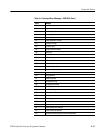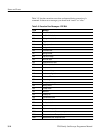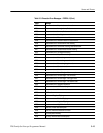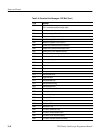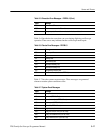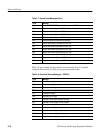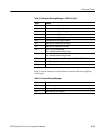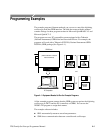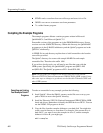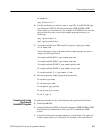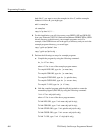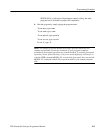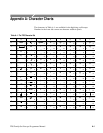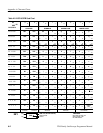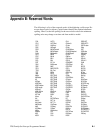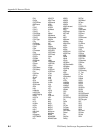
Programming Examples
4–2
TDS Family Oscilloscope Programmer Manual
H GETWFM: reads a waveform from an oscilloscope and stores it in a file.
H CURSOR: uses cursors to measure waveform parameters.
H TL: a talker-listener program.
Compiling the Example Programs
The example programs diskette contains programs written in Microsoft
QuickBASIC 4.5 and Microsoft QuickC 2.5.
Executable versions of the programs are in the PROGRAMS directory. Source
versions are in the SOURCES directory. Within this directory, the QuickBASIC
programs are in the Q-BASIC subdirectory and the QuickC programs are in the
QUICK-C subdirectory.
A README file in each directory explains how to build executable code from the
source files provided.
The QuickC directory also comes with sample MAKE files and sample
executable files. These have the suffix .MAK.
If you wish to develop code, you will need to use files that come with the
GPIB system. Specifically, the QuickBASIC programs use QBDECL.BAS
and QBIB.OBJ. The QuickC programs use DECL.H and MCIB.OBJ.
NOTE. The programs you compile in the Sources directory work with the
Tektronix S3FG210 (National Instruments GPIB-PCII-IIA) GPIB system. It may
take extra steps or changes to get them to work with older Tektronix GURU and
other GPIB systems.
To make an executable for any example, perform the following:
1. Install QuickC. Select the SMALL memory model. Be sure to set up your
path so DOS can access the QuickC directory.
2. Install the Tektronix S3FG210 (National Instruments GPIB-PCII/IIA) GPIB
board and drivers. Remember to identify the GPIB device as DEV1. You can
use the IBCONF.EXE program to do this.
3. Copy the files from the examples diskette to your hard disk. You might also
create a special directory to store them. For example, if the current drive is
hard disk C, you want to store the examples in drive C, and the examples
diskette is in drive B, you might type:
mkdir examples
Compiling and Linking
Your Example Quick-C
Programs



